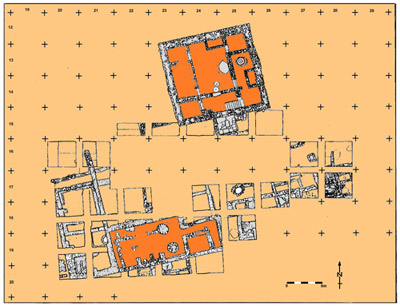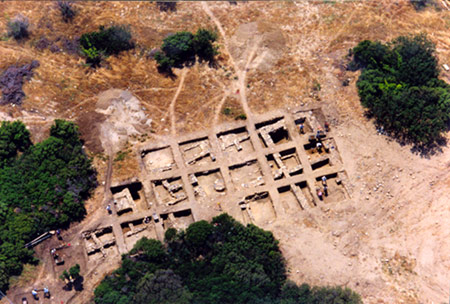
Plan of the acropolis sector
The army of Philip II destroyed Argilos in 357 B.C. and gave its land to the Macedonian king. The city was abandoned and its buildings destroyed as we can deduce from a destruction level found in all areas excavated. The city was unhabitated afterwards except for a limited area on the acropolis. The new buildings reused the earlier walls as foundations and, therefore, the dwellings followed the orientation of the previous city.
One of the most impressive constructions of this period is a rectangular building measuring 10 x 6 meters with an entrance on its eastern side. Interior crosswalls on its southern side divided the building into three rooms. The room closest to the entrance contained two circular hearths. These hearths where found full of ashes and the floor around contained many broken vases. The area in which the building was erected, its size and its architectural elements seem to indicate that it was probably a temple or a public building, maybe a prytaneion.

Aerial view of the acropolis excavation
In the same area, excavators brought to light several small houses with exterior courtyards and one central well. But the most important building is a large rectangular mansion built in the middle of the area which we shall present further on.
Argilos slowly fell into oblivion and at the end of the 3rd century B.C., the site was definitely abandoned, not even to be occupied during the roman and Byzantine periods.


